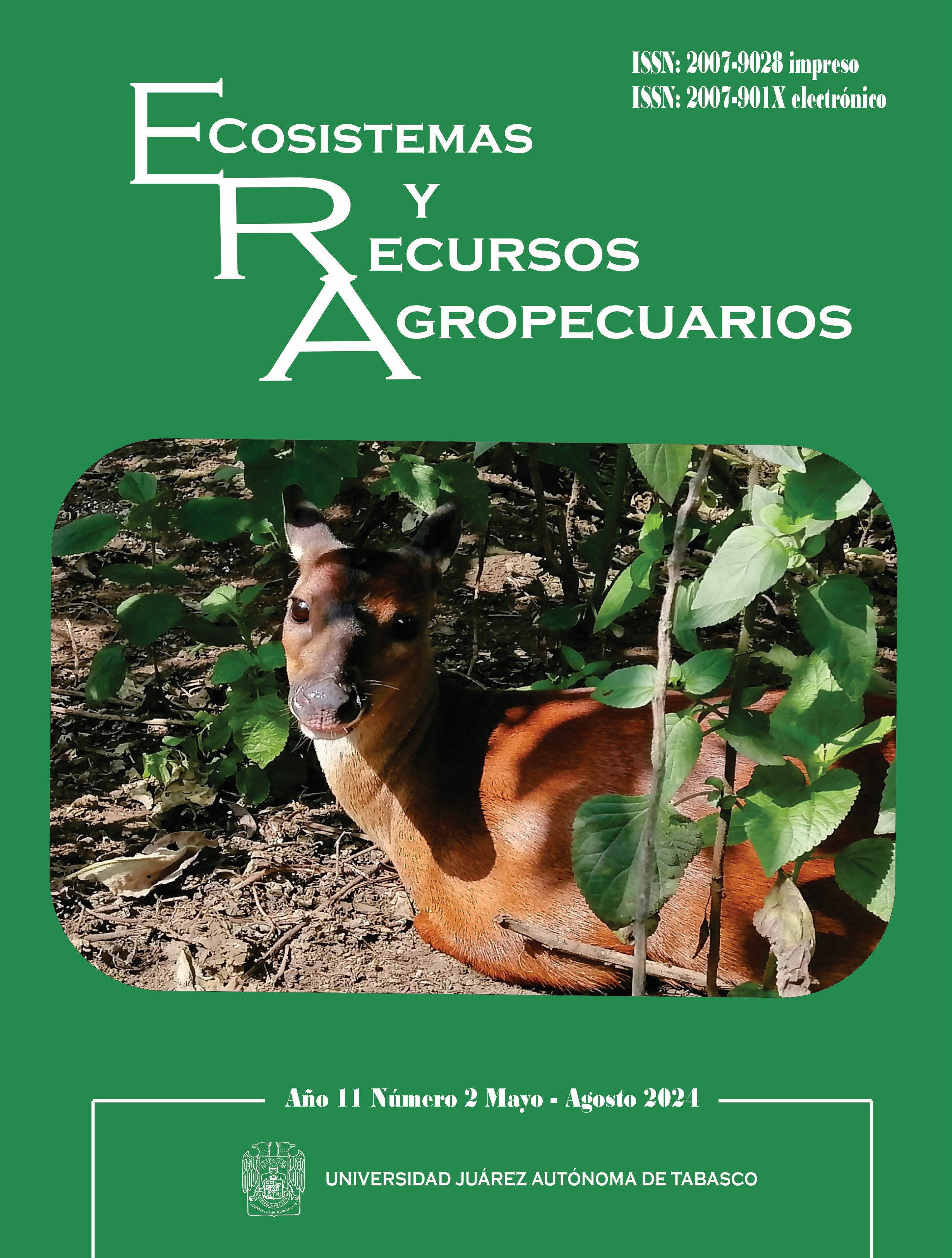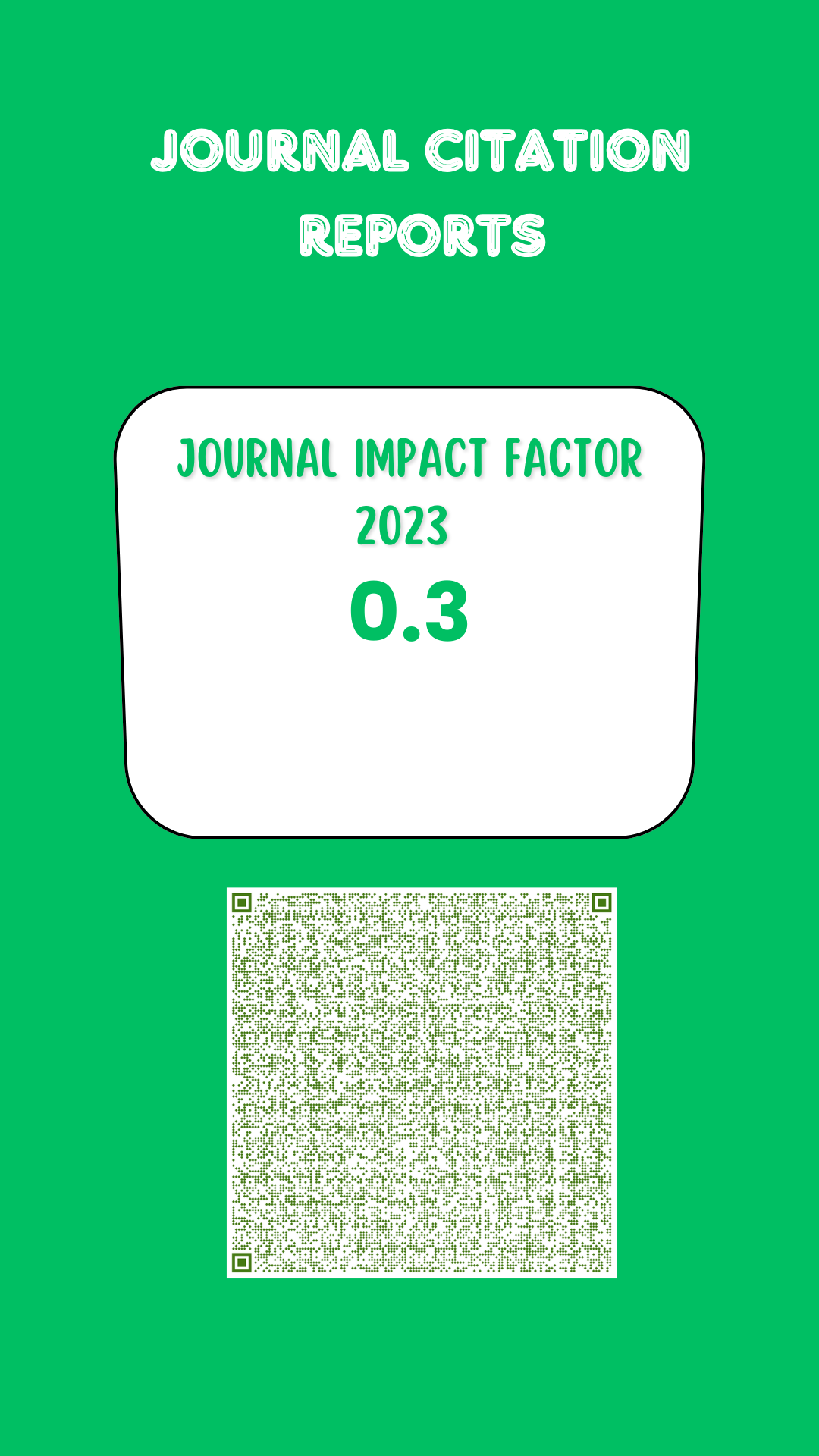Effect of nanochitosan-iodine application in lettuce on biofortification, growth and yield
DOI:
https://doi.org/10.19136/era.a11n2.3615Keywords:
Biofortification, biopolymers, nanotechnology, potassium iodate, potassium iodideAbstract
Iodine (I) is an essential element in human nutrition, however, in plants it is considered a beneficial element. The objective of the present work was to evaluate the application of nanochitosan-iodine complexes (NPsCs-I) on the biofortification of I in lettuce, in addition to its effect on growth and yield. Foliar application of NPsCs-I complexes was carried out on lettuce plants where plant height, head diameter, dry biomass and I content were measured. The application of NPsCs-I complexes had a significant effect on the yienld, since with the application of the complex at a dose of 5 mg L-1 of KIO3, it increased by 30.8% compared to the control. The foliar application of NPsCs-I complexes can provide an alternative for biofortification of I and biostimulation of lettuce plants.
Downloads
References
Ashra B, Rashidipour M, Marzban A, Soroush S (2019) Mentha piperita essential oils loaded in a chitosan nanogel with inhibitory effect on biofilm formation against S. mutans on the dental surface. Carbohydrate Polymers 212: 142-149. DOI: 10.1016/j.carbpol.2019.02.018
ATA (2014) Deficiencia de I. American Thyroid Association. https://www.thyroid.org/wpcontent/uploads/patients/brochures/espanol/deficiencia_de_I.pdf. Fecha de consulta: 17 de octubre de 2022.
Castro-Juárez C, Ramírez-García S, López-Toledo S, Juárez Pérez MH, Villa-Ruano N (2022) Perfil nutricional de la dieta en la Casa del Niño Indígena CDI de Oaxaca, México. Revista Española de Nutrición Comunitaria 28(2): 1-12.
Chun SC, Chandrasekaran M (2019) Chitosan and chitosan nanoparticles induced expression of pathogenesis-related proteins genes enhances biotic stress tolerance in tomato. International Journal of Biological Macromolecules 125: 948–954. https://doi.org/10.1016/j.ijbiomac.2018.12.167
Dávila-Rangel I, Leija-Martínez P, Medrano-Macías J, Fuentes-Lara LO, González-Morales S, Juárez-Maldonado A, Benavides-Mendoza A (2019) Iodine biofortification of crops. In: Jaiwal PK, Chhillar AK, Chaudhary D, Jaiwal RJ (ed) Nutritional Quality Improvement in Plants, Springer Nature, Switzerland. pp: 79-113.
Dávila-Rangel I, Trejo L, Ortega H, Maldonado A, González S, Companioni B, Benavides A (2020) Comparison of iodine, iodate and iodine-chitosan complexes for the biorfortificacion of lettuce. Applied Science 10: 2378. https://doi.org/10.3390/app10072378
Divya K, Jisha M (2018) Chitosan nanoparticles preparation and applications. Environmental Chemistry Letters 16: 101-112.
Fisher PWF, L’Abbe MR, Giroux A (1986) Colorimetric determination of total iodine in foods by iodide-catalyzed reduction of Ce+4. Journal of Association of Official Analytical Chemists 69: 687-689. https://doi.org/10.1093/jaoac/69.4.687
Galván M, Fernández TL, Suárez-Diéguez T, López-Rodríguez G (2020) Estado nutricional de I en niños escolares mexicanos de zonas urbanas y rurales. Endocrinología, Diabetes y Nutrición 67(4): 228-234. https://doi.org/10.1016/j.endinu.2019.09.003
Golubkina N, Moldovan A, Fedotov M, Kekina H, Kharchenko V, Folmanis G, Alpatov A, Caruso G (2021) Iodine and selenium biofortification of chervil plants treated with silicon nanoparticles. Plants 10: 2528. https://doi.org/10.3390/plants10112528
Halka M, Smoleń S, Ledwożyw SI (2020) Antioxidant potential and iodine accumulation in tomato (Solanum lycopersicum L.) seedlings as the effect of the application of three different iodobenzoates. Folia Horticulturae 32(2): 203-219. https://doi.org/10.2478/fhort-2020-0019
Incrocci L, Carmassi G, Maggini R, Poli C, Saidov D, Tamburini C, Kiferle C, Perata P, Pardossi A (2019) Iodine accumulation and tolerance in sweet basil (Ocimum basilicum L.) with green or purple leaves grown in floating system technique. Frontiers in Plant Science 10: 1494. https://doi.org/10.3389/fpls.2019.01494
Kato S, Wachi T, Yoshihira K, NakagawaT, Ishikawa A, Takagi D, Takahashi M (2013) Rice (Oryza sativa L.) roots have iodate reduction activity in response to iodine. Frontiers in Plant Science 4: 227-238. https://doi.org/10.3389/fpls.2013.00227
Kiferle C, Martinelli M, Salzano AM, Gonzali S, Beltrami S, Salvadori PA, Hora K, Holwerda HT, Scaloni A, Perata P (2021) Evidences for a nutritional role of iodine in plants. Frontiers in Plant Science 12: 616868. https://doi.org/10.3389/fpls.2021.616868
Krzepiłko A, Prażak R, Skwaryło-Bednarz B, Molas J (2019) Agronomic biofortifcation as a means of enriching plant foodstufs with iodine. Acta Agrobotanica 72(2): 1766. https://doi.org/10.5586/aa.1766
Kyriacou M, Rouphael Y (2018) Towards a new definition of quality for fresh fruits and vegetables. Scientia Horticulturae 234: 463-469. https://doi.org/10.1016/j.scienta.2017.09.046
Lawson P, Daum D, Czauderna R, Vorsatz C (2016). Factors influencing the efficacy of iodine foliar sprays used for biofortifying butterhead lettuce (Lactuca sativa). Journal of Plant Nutrition and Soil Science 179 (5): 661-669. https://doi.org/10.1002/jpln.201600213
Li R, Li DW, Yan AL, Hong CL, Liu HP, Pan LH, Song MY, Dai ZX, Ye ML, Weng HX (2018) The bioaccessibility of iodine in the biofortified vegetables throughout cooking and simulated digestion. Journal of Food Science and Technology 55: 366–375. https://doi.org/10.1007/s13197-017-2946-4
Li R, He J, Xie H, Wang W, Kumar S, Sun Y, Hu J, Yin H (2019) Effects of chitosan nanoparticles on seed germination and seedling growth of wheat (Triticum aestivum L.). International Journal of Biological Macromolecules 126: 91-100. https://doi.org/10.1016/j.ijbiomac.2018.12.118
Lossow K, Schwerdtle T, Kipp A (2019) Selenium and iodine–essential trace elements for the thyroid. Ernaehrungs Umschau 66: 175-180. https://doi.org/10.4455/eu.2019.032
Malerba M, Cerana R (2016) Chitosan effects on plant systems. International Journal of Molecular Sciences 17(7): 996-1011. https://doi.org/10.3390/ijms17070996
Manikandan A, Sathiyabama M (2016) Preparation of chitosan nanoparticles and its effect on detached rice leaves infected with Pyricularia grisea. International Journal of Biological Macromolecules 84: 58-61. https://doi.org/10.1016/j.ijbiomac.2015.11.083
Medrano-Macías J, Leija-Martínez P, González-Morales S, Juárez-Maldonado A, Benavides-Mendoza A (2016) Use of iodine to biofortify and promote growth and stress tolerance in crops. Frontiers in Plant Science 7: 1146. https://doi.org/10.3389/fpls.2016.01146
OMS (2004) La eliminación mundial de la carencia de I está a nuestro alcance. Organización Mundial de la Salud.
https://apps.who.int/mediacentre/news/releases/2004/pr93/es/index.html. Fecha de consulta: 17 de octubre de 2022.
OMS (2014) Concentraciones de I en orina para establecer estado nutricional de I en poblaciones. Organización Mundial de la Salud. Sistema de Información Nutricional sobre Vitaminas y Minerales. Ginebra: Organización Mundial de la Salud WHO/NMH/NHD/EPG/14.2. https://iris.who.int/bitstream/handle/10665/130836/WHO_NMH_NHD_EPG_14.3_spa.pdf?sequence=1&isAllowed=y. Fecha de consulta: 17 de octubre de 2022.
OPS (2018) SHAKE menos sal, más salud. Guía técnica para reducir el consumo de sal. Organización Panamericana de la Salud. 58p. https://www.paho.org/es/documentos/shake-menos-sal-mas-salud-guia-tecnica-para-reducir-consumo-sal. Fecha de consulta: 17 de octubre de 2022.
Puccinelli M, Landi M, Maggini R, Pardossi A, Incrocci L (2021) Iodine biofortification of sweet basil and lettuce grown in two hydroponic systems. Scientia Horticulturae 276: 109783. https://doi.org/10.1016/j.scienta.2020.109783
Rösner H, Möller W, Groebner S, Torremante P (2016) Antiproliferative/cytotoxic effects of molecular iodine, povidone-iodine and Lugol's solution in different human carcinoma cell lines. Oncology letters 12(3): 2159-2162. https://doi.org/10.3892/ol.2016.4811
Sabatino L, Di GF, Consentino BB, Rouphael Y, El-Nakhel C, Bella S, Vasto S, Mauro RP, D´Anna F, Iapichino G, Caldarella R, De Pasquale C (2021) Iodine biofortification counters micronutrient deficiency and improve functional quality of open field grown curly endive. Horticulturae 7(3): 58-74. https://doi.org/10.3390/horticulturae7030058
Sathiyabama M, Manikandan A (2021) Foliar application of chitosan nanoparticle improves yield, mineral content and boost innate immunity in finger millet plants. Carbohydrate Polymers 15(258): 117691. https://doi.org/10.1016/j.carbpol.2021.117691
Stasinska-Jakubas M, Hawrylak-Nowak B (2022) Protective, biostimulating, and eliciting effects of chitosan and its derivatives on crop plants. Molecules 27: 2801. https://doi.org/10.3390/molecules27092801
Steiner A (1961) A universal method for preparing nutrient solutions of a certain desired composition. Plant and Soil 15(2): 134-154. https://doi.org/10.1007/BF01347224
Taylor PN, Albrecht D, Scholz A, Buey G, Lazarus JH, Colin MD (2018) Global epidemiology of hyperthyroidism and hypothyroidism. Nature Reviews Endocrinology 2014: 301-16. https://doi.org/10.1038/nrendo.2018.18
Tschiersch J, Shinonaga T, Heuberger H (2009) Dry deposition of gaseous radioiodine and particulate radiocaesium onto leafy vegetables. Science of the total environment 407(21): 5685-5693. https://doi.org/10.1016/j.scitotenv.2009.06.025
WHO (2020) Reducir el consumo de sal. World Health Organization.https://www.who.int/es/news-room/fact-sheets/detail/salt-reduction. Fecha de consulta: 17 de octubre de 2022.
Downloads
Published
Issue
Section
License
Copyright (c) 2024 Ecosistemas y Recursos Agropecuarios

This work is licensed under a Creative Commons Attribution-NonCommercial-ShareAlike 4.0 International License.
Aviso de copyright
Los autores que se envían a esta revista aceptan los siguientes términos:
una. Los autores conservan los derechos de autor y garantizan a la revista el derecho a ser la primera publicación del trabajo con una licencia de atribución de Creative Commons que permite a otros compartir el trabajo con un reconocimiento de la autoría del trabajo y la publicación inicial en esta revista.
B. Los autores pueden establecer acuerdos complementarios separados para la distribución no exclusiva de la versión del trabajo publicado en la revista (por ejemplo, en un repositorio institucional o publicarlo en un libro), con un reconocimiento de su publicación inicial en esta revista.
C. Se permite y se anima a los autores a difundir su trabajo electrónicamente (por ejemplo, en repositorios institucionales o en su propio sitio web) antes y durante el proceso de envío, ya que puede conducir a intercambios productivos, así como a una cita más temprana y más extensa del trabajo publicado. (Consulte El efecto del acceso abierto).



